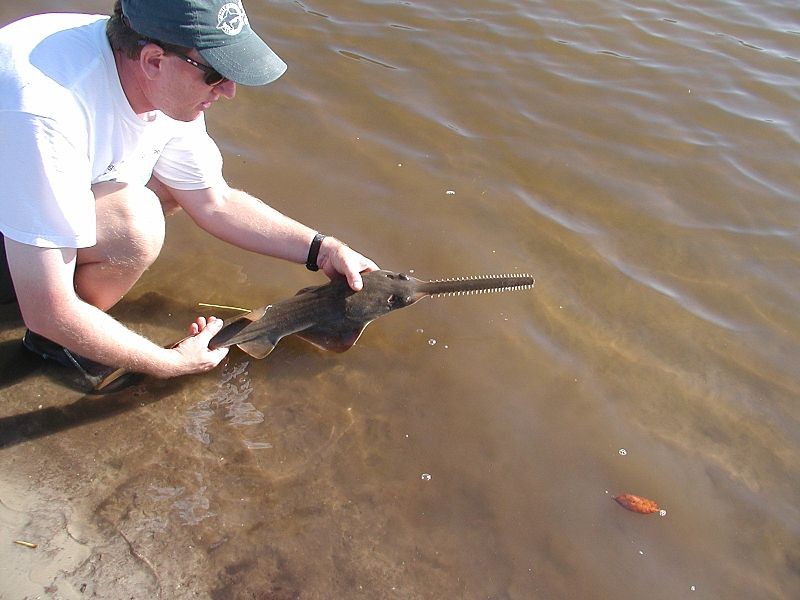Securing a Safe Future for Sawfishes

Shark and ray experts from around the world gathered last week at the Zoological Society of London to address the plight of the most threatened marine fishes in the world – the sawfishes. The group, convened by the IUCN Species Survival Commission (SSC) Shark Specialist Group, is breaking new ground with the development of a focused global action plan to bring these iconic species back from the brink of extinction.
Once found in tropical and subtropical waters throughout the world, all species of sawfish are now listed as Critically Endangered on the IUCN Red List of Threatened Species™. They have been revered by coastal societies throughout the Atlantic and Indo-Pacific Oceans for centuries. Today, ancient art, folklore, and mythology are almost all that is left to remind us of how widespread and abundant they were. Sawfishes are still featured on Thai postage stamps and West African currency, but the chance of seeing a sawfish in either region, or anywhere else other than the USA or Australia, is exceedingly low.
As their name suggests, sawfishes can be easily identified by their long, toothed rostra or “saws”. Long valued for medicinal and cultural purposes, and as curios, this most distinctive feature has been central to their downfall. The rostra are easily entangled in all kinds of fishing nets that are used extensively throughout the shallow coastal waters and river estuaries where sawfishes live.
Beyond this vulnerability to fishing gear, sawfishes, like other rays and sharks, are especially susceptible to overfishing because they tend to grow slowly, mature late, and produce few young. The loss of nearshore habitats that are critical for sawfish, particularly mangroves, also poses a threat to their survival, as does strong demand for their fins, which are used in the Asian celebratory dish, shark fin soup.
International trade in sawfish parts was banned through listing on Appendix I of the Convention on International Trade in Endangered Species (CITES) in 2007. Sawfishes are being increasingly protected in countries such as Brazil, India, Guinea Bissau, and Bahrain, but remain unprotected in other key countries within their range, such as Cuba, Madagascar, Pakistan, and Papua New Guinea. Around the world, sawfish conservation is hampered by a lack of awareness, political will, and financial resources, particularly in developing countries.
IUCN SSC Shark Specialist Group leaders will present the key results of this week’s meetings, including recommendations for priority activities to; fisheries policy makers during the United Nations Food and Agriculture Organization (FAO) Committee on Fisheries in July; and the IUCN World Conservation Congress in September. The final Global Sawfish Conservation Strategy is expected to be published in early 2013.
Photo courtesy of NOAA: A baby small-toothed sawfish (Pristis pectinata) from Atlantic Ocean, Southeast U.S. shelf/slope area.



